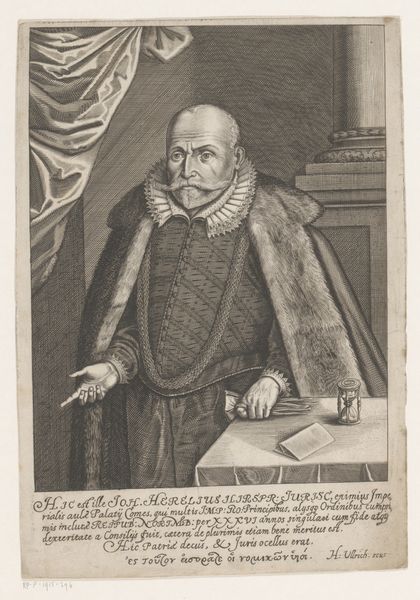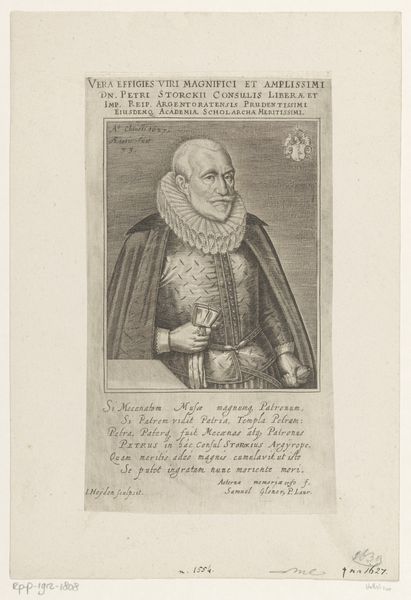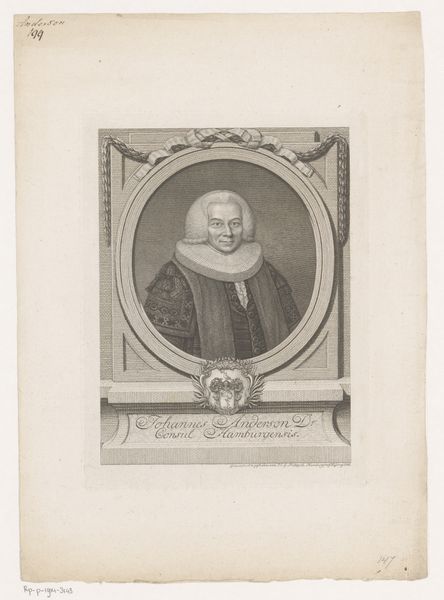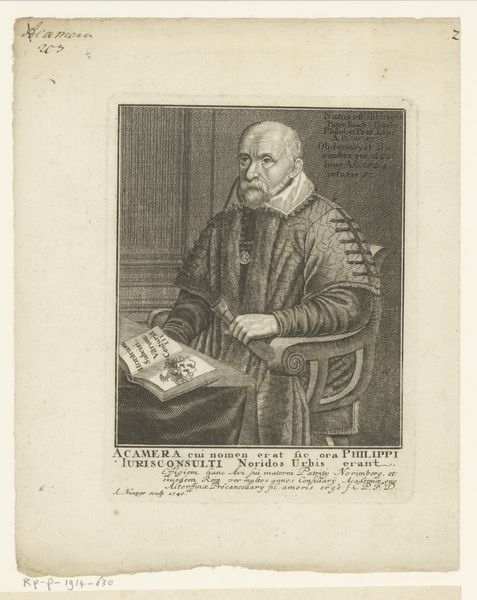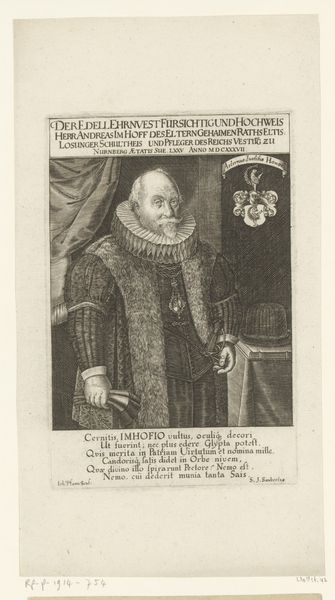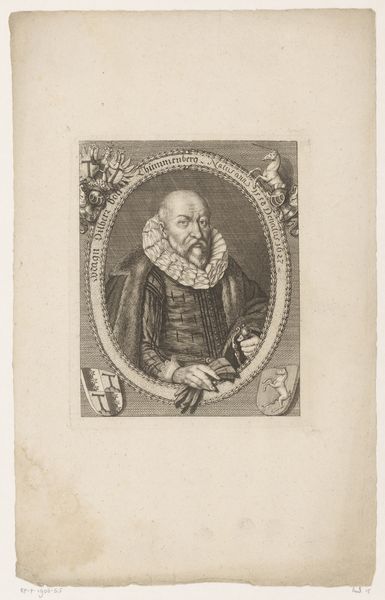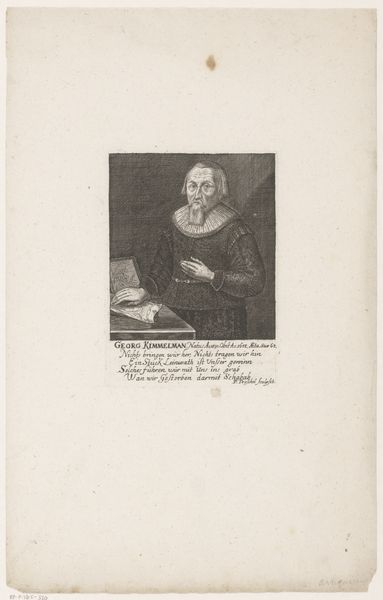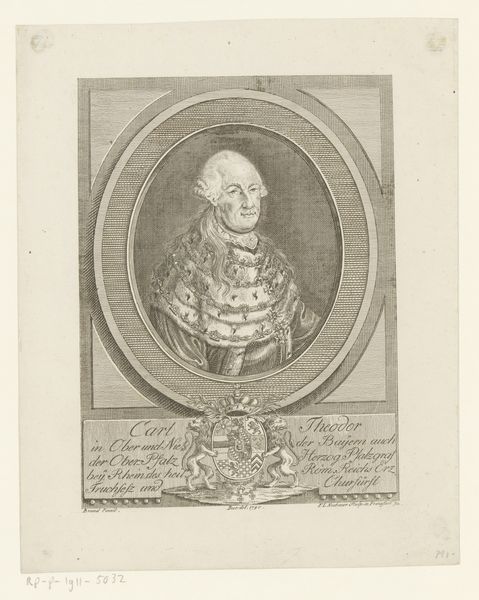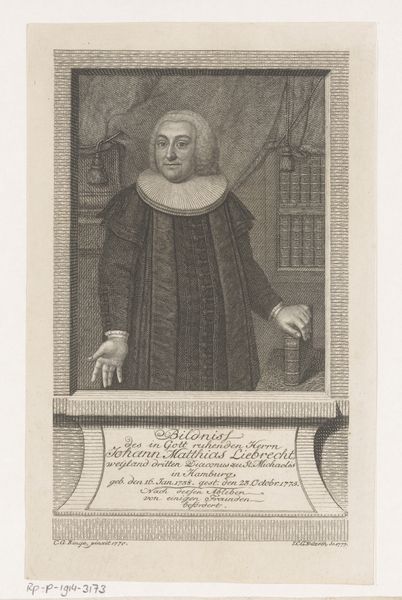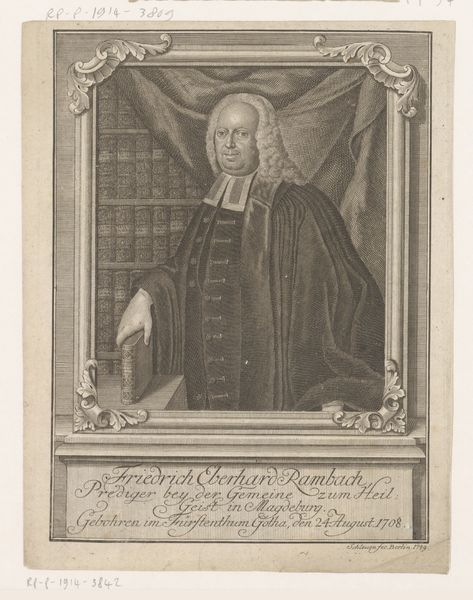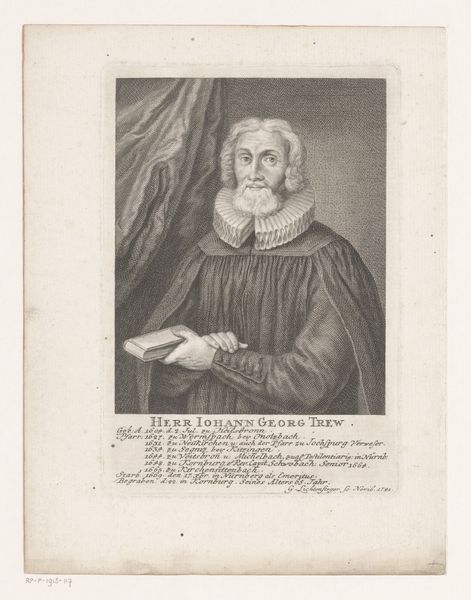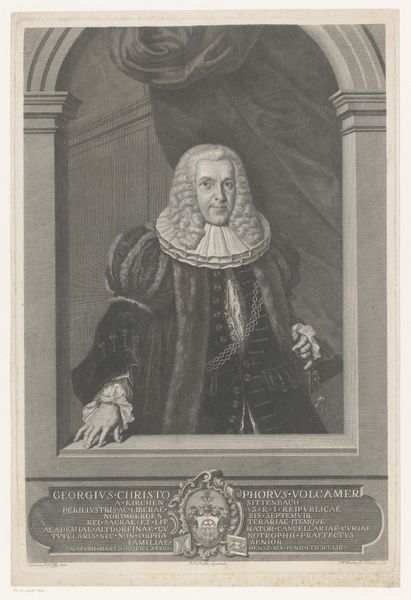
print, engraving
#
portrait
#
baroque
# print
#
old engraving style
#
historical photography
#
northern-renaissance
#
engraving
Dimensions: height 243 mm, width 163 mm
Copyright: Rijks Museum: Open Domain
Editor: This engraving is "Portret van Johann Herelius" by Hans Troschel, created sometime between 1595 and 1628. It's incredibly detailed, but also has a somber mood, don’t you think? What social dynamics are present in this portrait? Curator: Absolutely, and it’s critical to look at these Northern Renaissance/Baroque portraits as more than just likenesses. The sitter, Johann Herelius, is staged within a visual rhetoric that actively constructs his identity and status. How do the objects surrounding him reinforce, or perhaps even challenge, conventional notions of power? Editor: I see an hourglass, a book, some documents... stereotypical intellectual stuff, I guess? Curator: Exactly. Consider the fur stole; it speaks to his wealth and status, creating a visual hierarchy. What isn’t always obvious is how deeply ingrained such displays of power are within the patriarchal structures of the time. This portrait is part of a larger system that privileges certain bodies and ways of being over others. Troschel and Herelius were strategically creating and controlling their images, shaping the viewer's gaze and enforcing their importance in the political hierarchy of the era. Does that make you see the portrait differently? Editor: Yes, the theatrical drapery in the background, the way he's gesturing, it feels more performative now, less just about capturing someone's face. He’s really telling us something about his importance. Curator: Precisely. Portraits like these are powerful tools in negotiating social and political realities, aren't they? It is useful to consider how such images shape public perception. Editor: I see. Thinking about it in that context gives the image a totally new layer. Thanks!
Comments
No comments
Be the first to comment and join the conversation on the ultimate creative platform.
